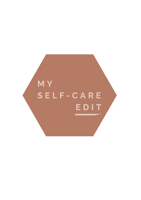Time to give yoga a try? Practising yoga has been shown to have so many physical benefits,...
What Does Ideal Prenatal Posture Look Like?
Good posture during pregnancy can really help to reduce aches and pains, particularly when it comes to lower back pain, neck pain, pelvic pain and the weakening of muscles. This can have impacts during pregnancy but also in the recovery process postpartum too, so regularly checking in with your posture during pregnancy can be a great way to support your long-term joint and muscle health.
What does ideal posture look like?
Hips:
During pregnancy, it’s recommended that the hips remain in a nice neutral position - so they’re not tilting forward and being pulled by the weight of your baby, but equally the hips aren’t tilting back and the tailbone isn’t tucking under too much as this can cause over engagement of the glute muscles. If the glutes have to stay engaged, this can cause weakness in the muscles which can make them less effective in the future and can result in less stability.
Rib cage:
The rib cage should be aligned over the pelvis, so you’re not leaning forwards or arching back. This can help to minimise lower back pain, particularly as baby grows and becomes heavier putting more pressure on your body.
Spine:
Imagine that you have a string coming from the top of your head pulling you upwards. This helps to create length and space for the spine, giving baby plenty of space to grow and supporting your own joint and muscle health too.
Your Posture Checklist
Come into a standing position, and let’s scan through the body starting at the feet all the way up to the head:
- Bring your feet to hip width distance apart or wider (often as baby takes up more space, it’s more comfortable to take a wider stance). Balance your weight evenly between the two feet, so you’re not leaning one way of the other.
- Keep your knees straight, but try not to lock out the joints. If a soft bend in the knees feels good for you and your body, you can take this option too
- Check in with the pelvis - are you tilting forwards or backwards? See if you can find a neutral position in the centre
- Check in with your upper body - can you stack your rib cage over your pelvis, keeping everything nicely aligned
- Are your shoulders hunching forwards? Try gently rolling your shoulders back and down, releasing any tension here
- Hold your head up straight with your chin in. Try not to tilt your head forward, backward, down or sideways
Does this feel like a lot to think about? Don’t worry, you can take this step by step. Perhaps notice something different each day and gradually build up towards a posture that supports your body. You might find that as time goes by you are adjusting your position more instinctively, standing or sitting up straighter, and listening to how your body feels to really help minimise those aches and pains.
Want some tips for your prenatal posture? Book a prenatal 1 to 1 yoga class with Alice or get in touch to find out more.


